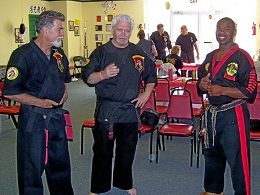One summer day in London, England, a man stepped out of his apartment–and into a riot.
The man was Mansoor Siddique, a native Londoner who ran an online business and didn’t pay much attention to news. His two year old son was acting up at home, so he decided they both needed some fresh air and a walk in the nearest business district. But this was August 8, 2011, at the height of some of the worst rioting London has seen in decades. As Siddique stepped onto the street, he saw rioters looting a nearby shop. He described the experience this way [link to http://www.mansoorsiddique.com/life/london-riots-and-tottenham-shooting/]: “I almost [felt] like I went to sleep and woke up in a zombie flick!”
In moments, he and his son became targets of the looters: a few approached, expressing interest in Siddique’s watch. When these would-be muggers got distracted, however, Siddique picked up his son and ran. He eventually sheltered behind a dumpster, his son asking all the while why his father wouldn’t let him walk.
What makes a riot? Anger or fear, plus a lot of people gathered together in a small area. As global economic challenges mount, and society finds it more and more difficult to cope with them, riots–and especially riots in big cities–are likely to become more frequent. In 2007-8, a spike in food prices led to riots in Bangladesh, Egypt, and many other countries. In 2011, riots over economic policy rocked Athens, the capital of Greece. And as political differences provoke mass demonstrations like Occupy Wall Street, the more likely open–and violent–confrontations with law enforcement become, even in the United States.
So what would you do if you stepped out of your home, or into the streets of a city you were visiting, and found yourself in the middle of a riot? Here’s a short guide to surviving a riot and the immediate aftermath.
1. Be aware. The man who stepped out into the London riots lived there, and he wasn’t aware of what was going on. You can’t always predict a riot in advance. But the best way to survive a riot is to avoid it. Keep out of places where you know there’s going to be a political demonstration. Don’t travel to countries experiencing civil unrest. If you find yourself in the middle of some sort of trouble, leave the scene–especially if you’re starting to see any low-level confrontations with the authorities.
2. Be prepared. If you can’t avoid a danger zone, be ready for anything. If you’re visiting a foreign country, dress like a local (but be careful not to dress like a local policeman or dissident-type). If you live or work in an area where a riot seems possible, prepare a bag of supplies–food, water, clothing, toiletries–so that you can stay put for as long as a few days. If the situation is tense, and you get the sense that things may boil over soon, wear clothes that protect you from tear gas and other crowd-control weapons whenever you go out.
3. Take stock. Riots evolve, and you should tailor you approach to where you are in relation to what’s going on–and to the point during the riot you’ve arrived on the scene. Think of a riot like a battle: there’s a moving line of conflict where rioters confront the police, or engage in looting and destruction. There’s also generally an area behind the lines, where there’s far less activity, and far more opportunities for you to find safety. Even if the riots go on for days, you’re likely to be “behind the lines” for most of that time.
4. If you’re in the front lines, get out. Let’s say you’re leaving a sporting event or a concert, and the crowd’s getting rowdy. So–get out of the crowd. Make your way to the sides and look for an escape route–a crossroads, a mall, anything that offers an exit. Until you find one, keep a barrier between you and the mob, something like a wall or even a set of steps or a row of columns. If there’s a police line, don’t regard that as a way out. The police may regard your approach as a threat and take action. Finally, as you move to the sides be sure to go with the flow. Moving against the crowd invites conflict and raises the risk you’ll stumble and possibly get trampled.
5. If you’re in a car on the front lines, you can try driving through the crowd, as slowly and as courteously as possible. If the crowd gets rowdy or decides to regard you as a provocation or a threat, be prepared to abandon your vehicle. If you can see violence through your windshield, that’s also a sign to get out of the car. Your life is much more important than your property.
6. Don’t be a hero. This applies whether you’re in the front lines or behind them. Jumping in to stop a fight or preach at looters just makes you a target to a mob already prone to violence. And if the police do show up, they may not be able to tell you’re one of the good guys–making you a potential target for both sides.
7. Get inside. If you’re behind the lines, this is your best option. Our London businessman, Mansoor Siddique, fled with his son to a friend’s house after the immediate danger had passed. After waiting a while, he returned home. Like him, find somewhere safe to shelter. Again, if you live or work in an area where a riot seems possible, have a supply bag ready so you can hunker down until law enforcement regains control.
Riots are frightening things. But if you keep your head, you can make it out with a minimum of risk. And if you prepare beforehand, you’ll find avoiding risk much easier than you might think..


